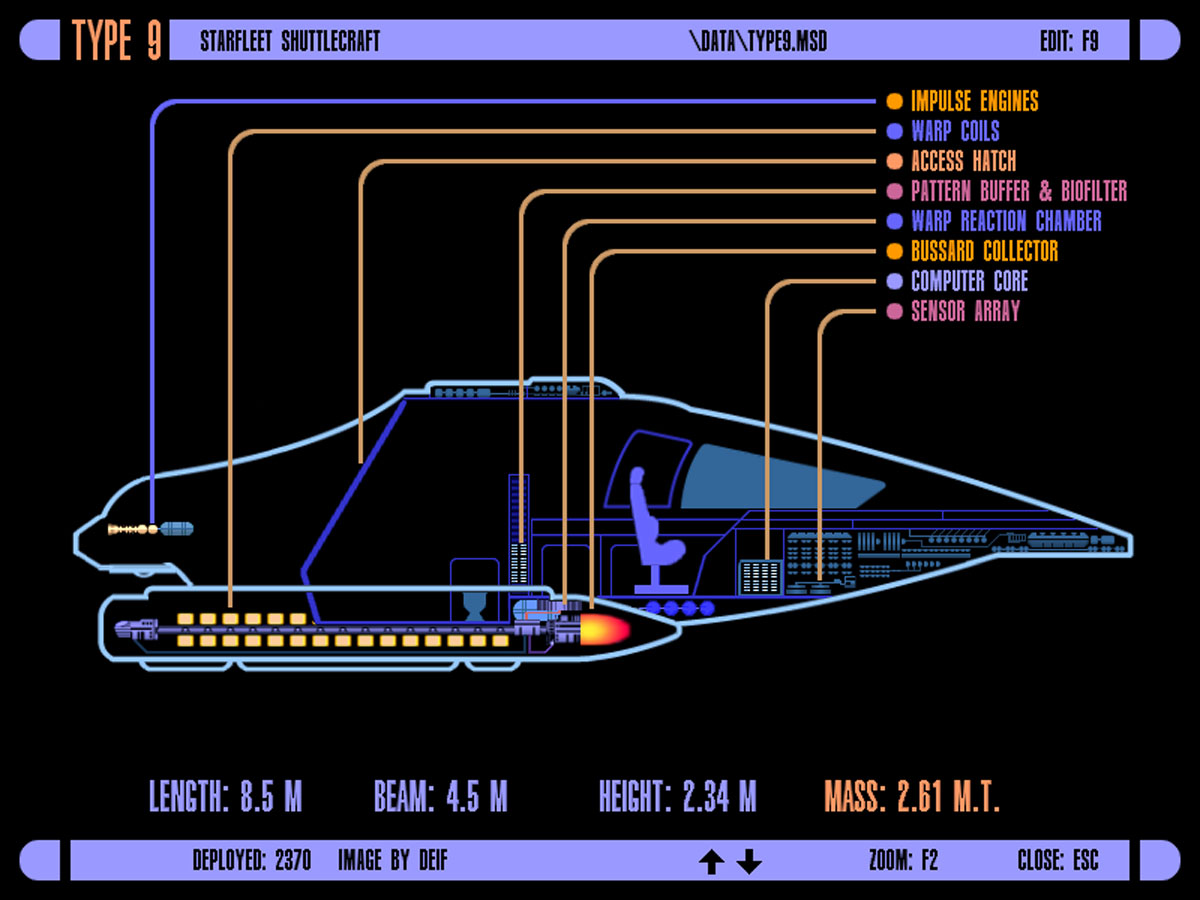Starship Registry Entry
Type-9 Shuttle

Improved Impulse Drive
The ship's Impulse drives are more powerful than on most ships, allowing the ship to accelerate much more quickly. When the flight controller succeeds at the Impulse, Attack Pattern, Evasive Action, or Ramming Speed Tasks, they may spend 2 Momentum to increase the Difficulty of attacks against the ship by 1 until the start of the flight controller's next Turn, due to the ship's rapid acceleration.
Photon Torpedoes
1, plus 2 passengers
The Type-9 shuttlecraft was also referred to as the Class 2 (second-class) after the Type-8 shuttlecraft was given priority in production over the arguably more elegant and smaller Type-9. The Type-9 was originally designed as a single crew warp-capable fighter to replace the larger multi- crewed fighters currently deployed in defensive formations across the Federation, but initial flight tests showed that the design would be far more successful as a small shuttlecraft with its internal space dedicated to sensors and cargo rather than shielding and offensive systems.
As holdovers from its initial role as a fighter, the Type-9 has incredible agility at sublight speeds. This maneuverability also extends into superluminal speeds with the Type-9 able to reduce power in a single nacelle to as low as 5% of its maximum energy rating, putting heavy torque on the subspace field and giving it warp maneuverability and stability that is unrivalled. Also as a holdover, the Type-9 has a permanently installed phaser system in its forward section and can be retrofitted with a limited use ventral mounted photon torpedo launcher. While its offensive systems are more than most shuttlecraft, its defensive systems are lacking. Sustained fire from a handheld type-3 phaser rifle can overwhelm the shields and knock them out, so use in hostile environments is out of the question. The sensors systems once used to target and analyze hostile vessels make the Type-9 successful as a secondary exploration vehicle. Mounts for tachyon transmitters and receivers are also located on the outside of the shuttle, allowing them to network with other vessels to form a tachyon detection grid to use against Dominion, Klingon, or Romulan cloaking devices.
